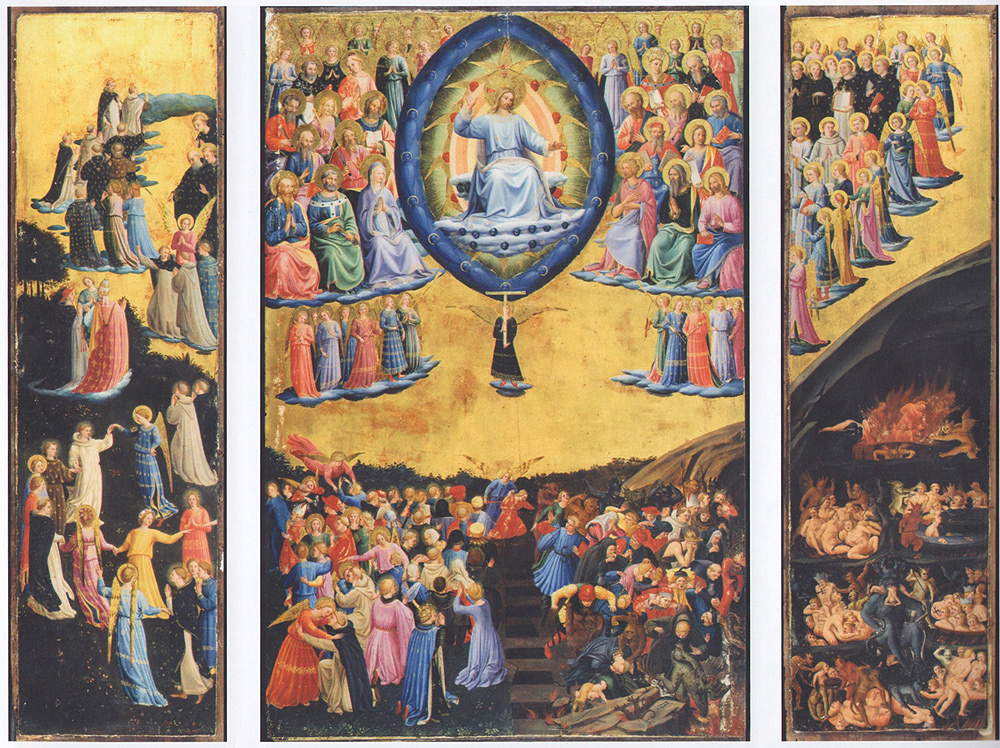The Leonforte Triptych, the 16th-century work, an early copy of Beato Angelico’s Last Judgment , which returned to the spotlight three years ago as it was about to go up for auction, also in Switzerland, has been sold in Switzerland . A fundraiser was also activated at the time to return the work to Sicily, since the triptych is first attested historically in 1624 among the possessions of Sicilian nobleman Fabrizio Branciforti. In an article in Finestre sull’Arte, Francesco Lo Gioco had precisely reconstructed in detail the entire history of the triptych, considered by Beato Angelico experts to be a late copy, whose author, however, is unknown. A recent proposal by Andrea De Marchi, published by Gerardo De Simone (one of Beato Angelico’s greatest exegetes) proposes attributing it to Scipione Pulzone. The triptych would have been given by Pope Urban VIII to Nicolò Placido Branciforti, founder of Leonforte.
The 2022 auction was later cancelled. The triptych, however, resurfaced a month ago, also in the Canton of Ticino, in a judicial auction in Balerna following enforcement proceedings by the Mendrisio enforcement office. The triptych was auctioned the day before yesterday at the Punto Franco in Balerna. As reported by Corriere del Ticino, the triptych was hammered out for the sum of 702,445 francs, about 732,000 euros: a very high sum, congruous should the work be considered an original by Beato Angelico, but at the moment there are no experts of reference of the artist to pronounce in favor of the autograph. The work was awarded to Artè Gallery SA, a Balerna-based firm that operates in the business of buying, selling and renting works of art. The company’s bid had come in writing, and none of those present at the auction, some 60 people, raised.
The painting left Italy in 2016, when it was considered a 19th-century copy of Beato Angelico’s Last Judgment preserved in Berlin. AGI, immediately after the sale, reached the mayor of Leonforte, Pietro Livolsi, who was present in Switzerland in an attempt to win the work and, according to the news agency, to simultaneously try to convince the Italian state to block the auction. According to AGI, on the evening before the sale, the Ministry of Culture asked the court in Mendrisio to suspend the sale in order to conduct investigations into whether the work had been released unauthorized: the point in fact is that in 2016 the work obtained regular permission to exit, but the following year a restoration report indicated it was older than it was believed to be, and therefore a valuable work.

Also according to AGI, Mayor Livolsi was willing to put up 15 thousand euros to purchase the work, a figure congruent with the value declared when the work was cleared for release (20 thousand euros), but completely impotent in the face of the offer of more than 700 thousand euros made by the buyer, far higher than even the estimates. Ticinoline reports that the value of the work, if dating back to the 15th century, was estimated at around 200 thousand francs. Lawyer Carlo Eligio Mazzetti, in The Journal of Cultural Heritage Crime, reports that in 2020 Christie’s auction house had estimated the work’s value, following a request, at between 100 and 150 thousand euros, in line with a late 16th-century copy of the highest quality.
The work remained in Leonforte, and in particular in the convent of the Capuchin fathers in the Sicilian town, until the early 20th century, when the heirs of Count Giovan Calogero Li Destri, who in 1852 had purchased the Branciforti family’s existing property in Leonforte, took it away from the convent, although the Superintendence of Catania and Syracuse placed a lien on the work. The bond was later revoked in 1975 by the Palermo superintendency: at that time, in fact, the work was derubricated as a 19th-century copy. The painting was then auctioned in 1987 by Christie’s in Rome. The auction was then blocked for investigation: the Capuchins of Leonforte in fact claimed ownership. The work was finally sold in 1990 as part of a private negotiation between the Li Destri family and a Roman collector.
Now it becomes more complicated to get the work back to Italy, but Mayor Livolsi is not giving up. “We could offer up to 20,000 euros,” the first citizen told Ticionline. “Now the Italian Ministry of Culture is taking an interest in the purchase and we intend to appeal on the basis of the work’s cultural relevance to the Italian state. I also emphasize that yesterday [March 10, ed.] the Department for the Protection of Cultural Heritage forwarded a request to the Mendrisio Magistrate’s Court to suspend the auction, but it was not granted.”
 |
| The Triptych of Leonforte sold in Switzerland. Efforts were being made to return it to Sicily |
Warning: the translation into English of the original Italian article was created using automatic tools. We undertake to review all articles, but we do not guarantee the total absence of inaccuracies in the translation due to the program. You can find the original by clicking on the ITA button. If you find any mistake,please contact us.